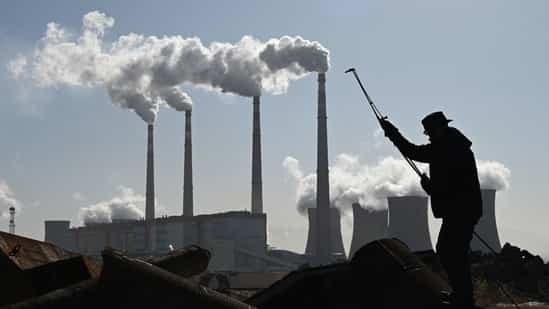Courtesy : www.c2es.org
Coal emission
Coal is a cheap and abundant resource, and carbon dioxide (CO2) from coal use is responsible for about 40 percent of global greenhouse gas (GHG) emissions from fossil fuel use. The United States and China are by far the largest emitters of CO2 from coal consumption, accounting for nearly 60 percent of global CO2 emissions from coal, with India a distant third. The United States currently relies on coal for roughly half of its electricity generation resulting in roughly one third of total U.S. emissions. China generates 80 percent of its electricity from coal, and in recent years, emissions from coal use have grown five times faster in China than in the United States. With enough coal reserves to meet current consumption levels for centuries, the United States and the rest of the world face the challenge of reconciling the realities of coal use with the dangers posed by climate change.
Carbon capture and storage (CCS) is a means to meet this challenge. If widely deployed, CCS could allow the world both to continue to exploit its cheap and abundant supply of coal and to adequately address the threat of climate change. CCS works by separating CO2 from other gases in the exhaust stream at power plants and industrial facilities, compressing the CO2 to pressures suitable for pipeline transport, and injecting the CO2 into deep geologic formations where it can be safely and indefinitely stored.
Although components of the CCS suite of technologies have been used in a variety of situations, the entire suite has not been deployed at a commercial scale at any coal-fueled power plant to date. Deployment has not proceeded for a number of reasons, primarily the high costs of installing and operating CCS technologies and the absence of government policies that place a financial cost on GHG emissions. In addition, uncertainties remain concerning actual cost and performance of CCS technologies at commercial scale. Finally, CCS deployment requires an appropriate regulatory system for CO2 storage, including long-term liability.
This brief describes the potential role of government in facilitating widespread and more rapid deployment of CCS through a number of means including: providing financial incentives for initial CCS projects through the use of bonus allowances under a cap-and-trade program, or a fund generated by charges on electricity or fossil-fuel based sources of electricity; setting GHG emission performance standards for coal generators or electricity providers; and establishing the required regulatory and liability frameworks for CO2 storage.




